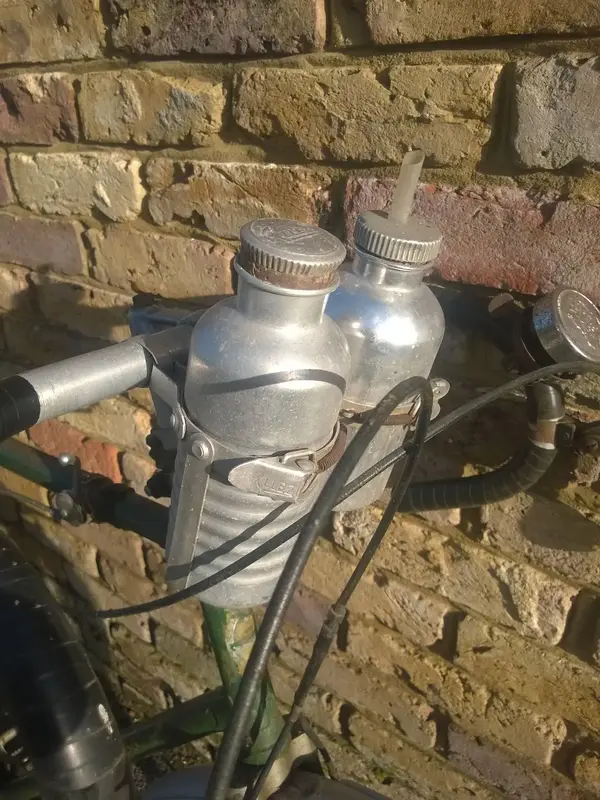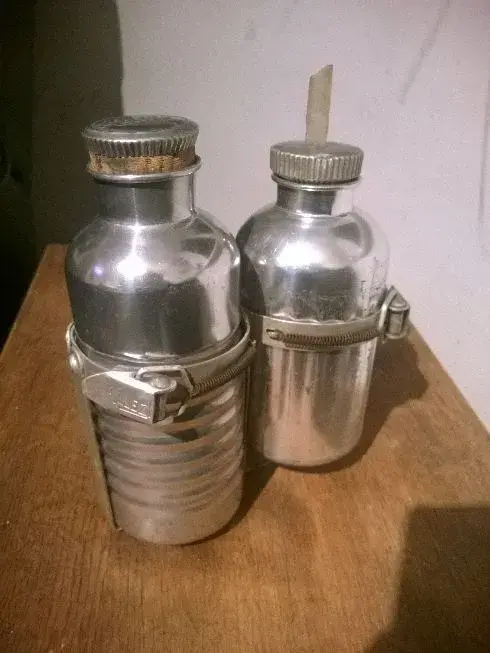Being sick at home at the moment, so have some time to do a (brief) writeup on restoring parts based on some pictures I made some time ago:
Polishing bike parts:
First step: find a pair of battered/scratched parts. For this example, I'll use pictures of a scratched pair of DA brake levers. Applied the same technique to stems, seatposts, cranks,... without any problems.
Second step: sand scatches/imperfections away with wet and dry grit paper (600-800 will do). Sand gently! Picture after sanding:
Third step: bath the parts in over cleaner (mine is from HG) for +/- 5 minutes to remove the anodising. You could use a plastic bag to, as you can see in the pictures. Use plastic gloves cause it's not that good for your hands! Rinse the parts thoroughly with water afterwards.
Fourth step: When dry, the parts will turn dull and white and you can start to polish. I use a simple bench grinder with a buffing wheel and some polishing compound. You could use a dremel for areas that are difficult to reach. In that case, don't use the standard dremel tools because they are a bit rubbish in my opinion. Go for tips like these, which are 'fixed' on the axle:
http://www.dhresource.com/albu_38142964 ... ng-pad.jpg
Brake lever on the left is polished with buffing wheel, the one on the right is still dull. In the back of the picture, you can see the green buffing compound I use:
Fifth step: Clean the parts up with autosol. The buffing compound can leave a dark residu that is difficult to remove, but autosol/triumph/... works great. Finished result:







